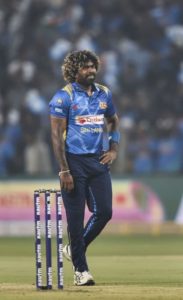Except for Disapproved Cricket (defined in section 32), any cricket match, tournament, cup, or league that is not International Cricket is Domestic Cricket. Domestic matches is played between member states of the ICC and its Associates, and between the state teams of the ICC Affiliates.
Domestic Cricket is played by the laws of cricket specified in Chapter 2. The playing conditions for each domestic competition are determined by the administrative body for that competition but must be consistent with these laws and any special conditions determined by the ICC.
Table of Contents
International Cricket Boards For Domestic Matches
Cricket Australia is responsible for administering cricket in Australia. It runs an annual Australian cricket season comprising first-class, List A and Twenty20 domestic competitions. Cricket Australia also selects a national team that represents Australia in international cricket matches, including Test Matches, One Day Internationals (ODIs) and Twenty20 Internationals (T20Is).
The national men’s team, known as “The Australian Team”, has won seven One Day International trophies; including five World Cups (1987, 1999, 2003, 2007 and 2015), one Champions Trophy (2006) and one ICC T20 World Cup (2016). The women’s national team has won two Women’s World Cups (1997 & 2005), nine Women’s World Cups and two Women’s World Twenty20 Cups; including four consecutive titles from 1997 to 2005.
Cricket Ireland is responsible for administering cricket in Ireland. It runs an annual Irish cricket season comprising three tiers of domestic competitions: Senior Cup First Class; Inter-Provincial Championship List A; and Twenty20 Inter-Provincial Cup First Class; Inter-Provincial Championship List A; and Twenty20 Inter-Provincial Cup
The Bangladesh Cricket Board is the governing body of the sport of cricket in Bangladesh. It operates the Bangladesh national cricket team and first-class cricket in Bangladesh. It is headquartered in Dhaka, Bangladesh.
The New Zealand Cricket Board (NZCB) is the governing body for cricket in New Zealand. It was formed in December 1879 as the New Zealand Cricket Association and adopted its current name in 1934. The organization was based for many years at Lancaster Park, now Eden Park, and relocated to its present premises at Seddon Park, Hamilton, in 1991. The organization’s head office is located at the NZC headquarters at Basin Reserve near Wellington.
Austrelian Domestic Cricket
The Australian Domestic One-Day Competition is a professional domestic limited-overs cricket competition played annually in Australia between teams representing state and territory capitals. The competition was known as the ING Cup from 2002 until 2007 when it was renamed KFC Big Bash following a sponsorship agreement with fast food chicken outlet KFC (the initials of which were retained as part of the official title).
In 2011 it changed again to its current name after another change of sponsorship; this time to Woolworths Limited, which had previously sponsored state teams separately from ING under a separate arrangement before 2002. The inaugural season of the competition was held during Australia’s 1999–2000 summer season, with matches played between October 1999 and January 2000. Victoria defeated Western Australia by 35 runs in the final at WACA Ground in Perth, which was broadcast in Australia by Fox Sports.

How Do You Defend in Cricket? Which Are The Best Defence In Cricket in 2024?
How do you defend in cricket? An intentionally deliberate shot is conducted under backward control to prevent the ball from hitting your stump or pads.

Lasith Malinga – The Best Choice For Shri Lankan Cricket History 2024
Separamadu Lasith Malinga isn’t just another Sri Lanka cricketer from the pink sheet. He is a world class bowler who has captivated the hearts of

Ravi Shastri – Indian Cricket Team Coach 2024
Ravi Shastri currently is an Indian cricket trainer, former player, commentator, coach and now current head coach of the India men’s national cricket team. As
What is the difference between first-class and domestic cricket?
First-class cricket is played by the national teams and by some of the top domestic teams. It is played over 3 or 4 days per side. The standard of cricket is higher than that of a one-day game or a limited-overs game.
Domestic cricket is played in local competitions between teams representing towns and cities. These matches are usually played over 3 days (or 4 on occasions) with each team playing 1 inning per day. The standard of cricket in domestic competitions varies widely, with the county championships, for example, being more prestigious than other competitions such as county leagues.
What is the difference between one-day cricket and limited-overs cricket?
One-day cricket is played to a set number of overs. This is usually 50 overs (100 balls). In this form of the game, teams must score more runs than their opponents in their allotted overs. If a team’s total score is less than the required total for that team to win, then it loses. If both teams’ scores are equal when the allotted number of overs has been played then there has been no result and the game ends in a tie.
Limited-overs cricket is one-day cricket played in competitions where each team plays with a single innings over several days. This type of limited-overs cricket aims to provide fast entertainment and action, rather than to test skills as much as traditional one-day games do (see above). Most domestic competitions are limited-overs competitions with each team playing 1 or 2 innings per match.
What are the diffrence Between test and T20 matches?
Test matches are international one-day games played by national representative teams against other national representative teams. They play each other over 3 or 4 days, with each side playing 1 inning per day. Test matches have status and tradition going back over 100 years but have become increasingly rare in recent years because of increasing competition from other forms of the game such as ODIs and T20s which have become popular with fans and players alike due to their short duration and high scoring rates. New Zealand’s most recent Test match was against Bangladesh in January 2014.
Twenty20 cricket is a format of limited-overs cricket played over 2 innings per team with a maximum duration of 3 hours per match. Twenty20 games were first introduced internationally in 2003 and have since become hugely popular, particularly in India and England. The ICC World Twenty20 tournament is held every 4 years and the next tournament will be held in Sri Lanka in 2016. New Zealand has not played any international T20s since the ICC World T20 tournament at home in 2010.
What is the difference between a first-class match and one day or limited overs match?
The main differences are that in a First Class match there is no restriction on how long the game lasts (i.e. each team has 2 innings), whereas in one-day matches, each team bats for a maximum of 50 overs (1 inning = 50 overs) with a 10-over break between innings. In limited-overs matches, the number of overs per innings is generally 20 or 25 (there are exceptions). A five-day test match played over 5 days with 2 innings per side has always been the pinnacle of cricketing achievement, with players honing their skills for years to reach this level.
The game was originally played over 3 days, but as technology improved and more people wanted to watch live sport, it was extended to 4 days, then 5 days. There are many competitions around the world where teams play at this level including County Championship (England); County Championship (South Africa); Sheffield Shield(Australia); Plunkett Shield(New Zealand); Ranji Trophy(India), etc.
One week cricket: Each side plays a maximum of 1 week – usually 4 or 5 days – with 1 inning per side on each day; Twenty20: Each side plays 1 inning per side in 20 overs; ODI: Each side has 1 inning, each lasting up to 50 overs; Twenty20 Internationals: Each side plays 2 innings lasting up to 20 overs each; One Day Internationals: Each side has 2 innings, each lasting up to 50 overs.
How many players make up a cricket team?
The minimum number of players to constitute a valid side for a match is 11, but most teams will play with 12 or 13 players (i.e. 1 or 2 substitutes). However, some matches may have more than 15 players if they are part of multi-day competitions such as Test matches or first-class matches.
A cricket team may comprise: 11 players to play 1 innings each (1st XI) – this is the main team used by most clubs and representative teams at club level; 10 players to play 2 innings each (2nd XI) – this is usually used by clubs when they are short on numbers; 9 players to play 3 innings each (3rd XI); 8 players to play 4 innings each (4th XI); 7 players to play 5 innings each (5th XI). In rural areas there are often many local clubs which cater to players of all ages and abilities.
Rules And Laws Of International Cricket
The Laws of Cricket are maintained by the International Cricket Council (ICC). The current version is the Code of Laws 2013, which was released in June 2013.
The game is played by these laws, and an umpire enforces them. He is assisted by two “bails” (small wooden or plastic tokens that sit atop stumps at either end) and a white cricket ball. The umpire adjudicates on whether a ball has been correctly bowled (i.e., not a no-ball or a wide), when a run is scored, and whether the batsman is out (i.e., hit wicket, stumped, run out, hit the ball twice). If the umpire decides that the batsman is out, he will raise his forefinger; otherwise, he will signal with his palm facing downwards.
In addition to calling and signaling deliveries as legal or illegal, wide balls etc., the umpires are tasked with making judgments about other aspects of play including foot faults when running between wickets and dangerous or unfair play. There are two umpires for a match – one stands behind the wicket at which the striker (batsman playing his shot) is taking guard/preparing to strike the ball, and the other umpire is behind the opposite wicket.
In certain limited-overs matches, notably Twenty20, there is a third umpire who can make decisions on certain incidents with the aid of video evidence. These include stumpings where the batsman appears not to have touched the ball and runouts where it is difficult for the umpire to decide whether a batsman is out or not. The third umpire is mandatory under the playing conditions for Test and Limited Overs International matches played between two ICC full member countries. These matches also have a match referee whose job is to ensure that play is within the Laws and spirit of cricket and to intervene when necessary in case of any misconduct by a player.
The match details, including runs and dismissals (known as “outs”), are recorded by two official scorers (scorers), one representing each team. The scorers are directed by the hand signals of an umpire (see image, right).
For example, raising an index finger above the head indicates that the batsman is out (has been dismissed); if both index fingers are raised above the head with palms facing each other, it indicates that he has been caught out. The scores are written down in pencil on sheets of paper taped onto a wooden slab; this slab has small holes drilled into it to allow passages of play to be recorded by punching holes in it with a metal pin borer. The slabs are stored in boxes in the pavilion.
The cricket bat used in the game is made of willow, and has been historically made in England. The ball used in the Test matches is a hard leather-seamed red ball, with a circumference of . It is white with black markings for limited overs internationals and ODIs.
The team batting last (i.e., at the end which begins its innings last) is known as the “innings” or “batting side”. The other team is known as the “fielding side”, whose aim is to dismiss (that is, get out) one or more batsmen from the batting side and thus prevent them from scoring runs, while simultaneously trying to score runs themselves. The game progresses until ten batsmen of the fielding side have been dismissed or a condition known as “timed out” occurs (see below).
At this point, one team’s innings ends while that of their opponents continues. When ten batsmen are dismissed, including those who retire not out (for example due to an injury), or if there are no more players left on their feet at any time during their innings except when they are ready to begin their first run after receiving a delivery (see below), then all eleven members of the opposition’s team are said to be “out”. When this happens only one member of each batting side remains in; these two batsmen become known as “the last pair”.
The final pair usually try to extend their team’s innings by running as many runs as possible, to give their team the best chance of scoring more runs than the opposition before being all out.
The team with the greater number of runs at the end of play wins the game. If both teams have scored an equal number of runs, then the game is a tie; this result is quite rare in matches of two innings a side with only 62 games in Test history and 2 games in ODI history having ended in a tie (in terms of runs scored). In some competitions, including Test cricket, there are ways for the result to be decided without playing out all possible overs (see below).
The game is adjudicated by two umpires. They position themselves at opposite ends of the pitch (i.e. on opposite sides of the wicket), and they have several other official roles including deciding when to begin and end play, indicating to players when they must stop batting or running and when they are out (“out!”), supervising any other aspects of play they deem necessary (such as restrictions on movement between overs – see below), and taking actions against players who commit offenses described in a code known as “the Laws” (see below).
The umpires are authorized to interrupt or even abandon a match due to circumstances likely to endanger the players, such as a damp pitch or deterioration of the light. They may also interrupt play because of unacceptable behaviour by players; for example, if one persistently breaks the “Laws” (see below). The umpires are required to make a decision “within a reasonable length of time” and they may change their decision if there is compelling evidence to do so. They may interrupt play because of bad weather or, in some parts of the world, to allow an injured player to receive medical treatment.
The match details, including runs and dismissals, are recorded by two official scorers (usually off-field), one representing each team. The scorers are directed by the hand signals of an umpire (see below). For example, the umpire raises a forefinger to signal that the batsman is out (has been dismissed; see below) – this is written down as “OUT” in capitals in the “observer’s scorecard”. If both scores agree, then play continues. If they disagree on any detail, they negotiate an agreement (“conciliation”) between them before uniting behind their collective version.
Which format of cricket is best?
The Test format is often considered to be the pinnacle of cricket. It is played over five days, with each team batting for two innings of up to two hours each, and a maximum of 100 overs. The team that scores the most runs wins.
The limited-overs game is played over 40 overs per side (70 in Twenty20). Each team bowls for 20 overs before being “knocked out” and fields for the next 20 overs. Each side bats twice, with a maximum of 20 overs per innings. In this format, it is possible to bowl all 20 overs in one day and complete the match in two days.
Is cricket a professional sport?
No. Cricket is a game played by amateur players in the course of their leisure time. It is not a professional sport, and there are no referees or managers to call out strikes when the ball is out of bounds or to control the tempo of play. The only thing that can be called professional (or “professional”) in cricket is a referee’s decision to call an end-of-game boundary on a field that has been declared as off but he/she had not made it clear whether the boundary was off or on.
Does cricket have an afterlife?
Yes, there are some forms of cricket which have existed for centuries after being played by cricket enthusiasts for many centuries before being written about in journals such as “The Sporting Times” and “The Sporting Life”. There are also many forms which have existed for decades after being written about in journals such as “The Times”.
There are also some forms of sport which exist in Australia and New Zealand but do not exist anywhere else. Cricket Australia, who run all Australian state teams, organises international tournaments like the Cricket World Cup and World Twenty20 (the latter being organised by ICC) held every three years. This also includes men’s and women’s representative tournaments like the Women’s Twenty20 Cup held every two years, as well as BBL tournaments held every four years by boards such as Aces Hockey League – this league uses professional players from around Australia and New Zealand to play against each other.
What are the levels of Cricket?
Cricket is played by a team of players between the ages of 16 and 35 years old. There are two types of cricket, one is the professional tournament, where teams play against teams from around the world. The second type of cricket is referred to as “inter-continental” cricket, where teams play against each other in various countries all over the world.
Cricket Australia (CA) oversees all these competitions such as national and international tournaments, while International Cricket Council (ICC) oversees Australian domestic and international tournaments. International Cricket Council (ICC) also overseees all other domestic matches held in Australia, including the World Cup and T20 World Cups held every four years.
How can I become a Ranji player?
Ranji is the most popular form of cricket in India and has over 2.5 million fans across the country. It is played by young boys between the ages of 16 and 35 years old, with a team of 15 players. The rules of the game are based on the rules of the game played by professional players, which is called “cricket”.
How can I become a Test player?
Test cricket is played by a team of players aged 16 years and above. The rules of the game are based on the rules of the game played by professional players, which is called “cricket”. Tests are played at home and away matches. Players have to have played 50 matches with their respective country before they can be selected for Test Cricket. The first person to score 2,000 runs in Test cricket will be declared a national hero.






